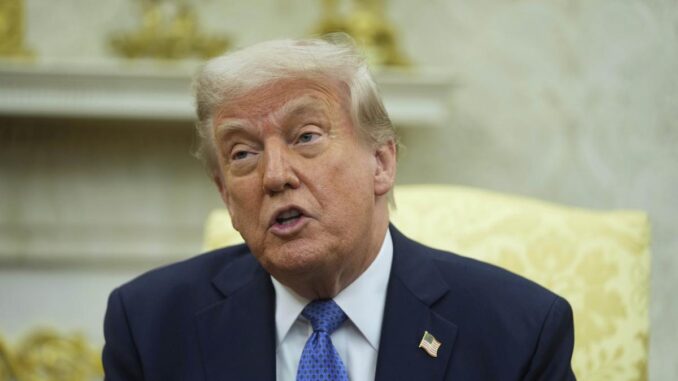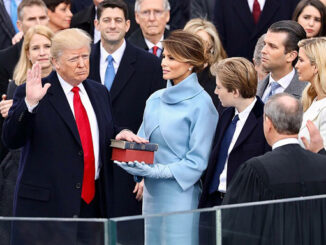
The proposed tariffs are expected to deliver a blow to India’s merchandise exports to the U.S.
“Though the idea behind reciprocal tariffs is to create balance in trade, they can lead to a back-and-forth increase in trade barriers with negative impacts on both economies. The evolution of reciprocal tariffs can be traced to when countries began using tariffs to shield their local industries, boost economic growth, and negotiate better trade deals. While reciprocal tariffs can help local industries in the short run, they lead to higher prices for consumers, disrupt supply chains, and slow down growth. Tariffs were a major source of income for governments, but this has greatly reduced. They now serve as protective measures or negotiation tools.”

The recently announced reciprocal tariffs by U.S. President Donald Trump have led to a decline in the prices of key commodities, crude oil, volatility, and a downturn in stock markets. Since the tariff announcement, crude oil prices have declined by nearly 14%. This drop is driven by fears that the global economy, particularly trade between major economies, may slow down, which could lead to reduced demand for oil. The responses to the announcement have reinforced concerns that a full-scale global trade war is now under way. New trade tensions could lead to higher inflation, slower economic growth, and escalating disputes. More importantly, the announcement has ushered in an extended period of uncertainty, opening up new challenges to economic policy making. While higher-income economies have the time and armory to retaliate to U.S. policies, lower-income ones face a double disadvantage. They have to cope with a new world order, while addressing pressing domestic economic issues.
The role of reciprocal tariffs
Reciprocal tariff is a tax that one country places on another in response to similar actions taken by that country. The rationale for this response is to protect local businesses, preserve jobs, and fix trade imbalances. Though the idea behind reciprocal tariffs is to create balance in trade, they can lead to a back-and-forth increase in trade barriers with negative impacts on both economies. The evolution of reciprocal tariffs can be traced to when countries began using tariffs to shield their local industries, boost economic growth, and negotiate better trade deals. While reciprocal tariffs can help local industries in the short run, they lead to higher prices for consumers, disrupt supply chains, and slow down growth. Tariffs were a major source of income for governments, but this has greatly reduced. They now serve as protective measures or negotiation tools.
Targeting Asia
Two aspects of the tariff tirade stand out. First, no other regions have been hit as hard as South Asia and Southeast Asia. Economic development over the past three decades in these regions has largely been driven by exports to the rest of the world, particularly the U.S. Exports to the U.S. contribute around 30% of Vietnam’s GDP and 25% of Cambodia’s. Vietnam and Cambodia have been hit by some of the highest tariffs (46% and 49%, respectively). Thailand, Indonesia, Malaysia, the Philippines, and Singapore have been hit by tariffs of varying magnitudes. Among countries of that region, this round of tariffs poses perhaps the greatest threat for Cambodia. The garment industry, which employs close to 750,000 workers, has been crucial in providing steady incomes to the poor. Thousands of jobs in this sector are now likely to be lost. The smaller economies of Southeast Asia are not in a position to retaliate, unlike China, which has hit back with its own measures. These economies can only negotiate. And the interests of the U.S. would primarily guide such negotiations.
The second is the curious case of calculation of tariffs. The formula underpinning reciprocal tariff is the country’s trade deficit with the U.S., divided by its exports, and then divided by two. The U.S. also implemented a 10% baseline tariff on almost every country. However, the formula for calculating tariff rates for nations around the world is based on an elasticity rate lower than it should be in practice. The formula assumes an elasticity of import prices with respect to tariffs of about 0.25, but economists are of the view that the number should be closer to one. This one-size-fits-all formula is blunt as it applies the same math to countries whether they have substantial trade barriers or wide-open markets. It considers only the size of the trade deficit, not why the deficit exists. Also, the trade deficit is calculated using only goods (items that can be shipped) and not services (technology, banking). This benefits countries which export few goods but plenty of financial services to the U.S.
Prospects for India
The proposed tariffs are expected to deliver a blow to India’s merchandise exports to the U.S. If tariff plans are implemented after the current pause, India could see a $7.76 billion drop (6.4%) in exports to the U.S. this year, according to an estimate by Global Trade Research Initiative. In 2024, India exported $89 billion worth of goods to the U.S. This underscores the need for India to broaden the trade base necessitating swift trade policy actions. First, India has to secure a balanced trade deal with the U.S., which requires continuous negotiations. Second, it needs to fast-track trade agreements with the European Union, the U.K., and Canada. Third, it needs to deepen ties with Russia, Japan, South Korea, ASEAN, and the UAE. Fourth, it needs to handle ties with China with deftness and strategic intent.
Some believe that India could convert the situation into an opportunity. These beliefs are partly driven by the spectacular success of Apple’s iPhone exports from India (by 54% last year). Hidden behind this achievement is the fact that the total goods exports for 2024-25 was $437 billion, which is the same as last year. Given this reality, cashing on the present situation requires enormous homework. A set of coherent reforms encompassing rationalized tariffs, simpler GST, easier trade processes and fair implementation of quality standards and controls are prerequisites for such an ambition. Easier straightforward responses to intensify inward orientation runs the risk of missing a global moment.
(The author is Director, Madras Institute of Development Studies. Views are personal)





Be the first to comment